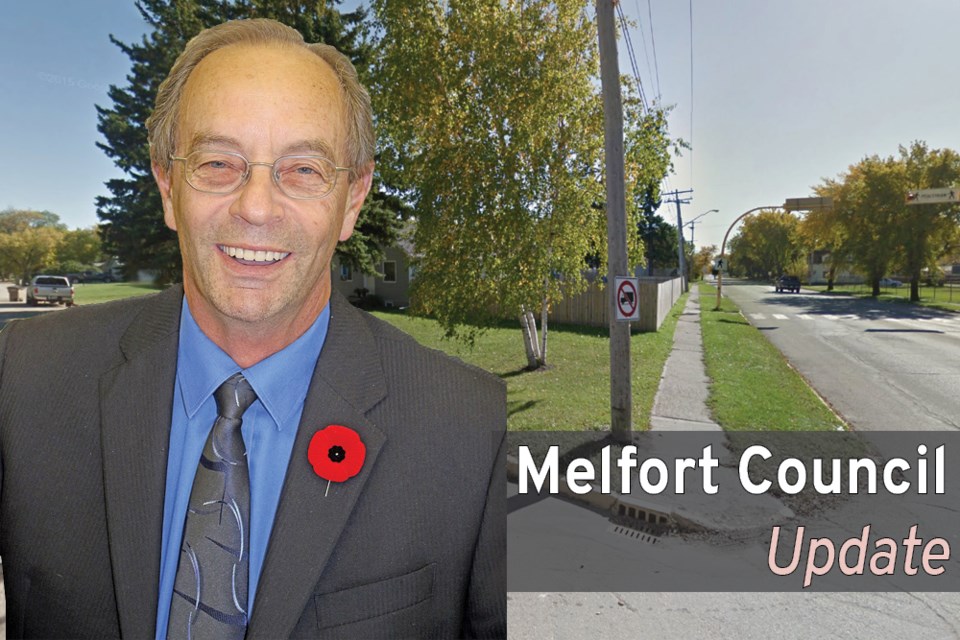The City of Melfort is looking at spending $650,000 to replace around 10 blocks of sidewalk.
That was part of the discussion council had about a capital budget that contains $4 million worth of projects – that is, if they receive all of the grants they’re applying for, something that rarely happens – at a committee of the whole meeting Dec. 11.
Rick Lang, Melfort’s mayor, said the typical spending on sidewalk replacement per year is $50,000.
“It will address probably a mile of sidewalk, something that is very much unheard of with respect to our capital budget on a normal budget year.”
That commitment would be paid with $600,000 from the city’s share of the gas tax and $50,000 from the infrastructure replacement fund.
Still in draft stage
Yet the capital budget that council discussed is still in a rough stage. The city’s administrative staff will be taking the feedback of council and preparing another draft to be presented at another committee of the whole meeting in the future.
“All in all, what I saw tonight was very positive, very comprehensive and something that addressed most of the concerns that council would have had in respect to moving forward as far as the capital spending allocation,” Lang said.
The proposed capital budget also includes $518,000 for the next phase of the Spruce Haven recreational development, $250,000 to replace water meters, $150,000 for a landfill study to figure out how to get it to meet standards, $166,000 to pave Broadway Ave from Regent Street to the city boundary – if property owners will pay $76,000 of the cost through a local improvement, $110,000 for LED lights for the airport runway, and $100,000 to upgrade the traffic signal at Main Street and Burrows Avenue.
Main Street landscaping
Main Street landscaping was a major discussion at the meeting, with two options proposed.
The first, at $40,150, would see rounded, bumped-out corners for the north part of the intersection with MacLeod Avenue and the south part of the intersection with Crawford Avenue. The bump-outs would be installed in a temporary manner to test local reaction.
The second option, at $170,000, would see bump-outs installed on a permanent basis at Main and Burrows – something staff didn’t recommend because they fear the water mains under the street could be prone to breaks.
Coun. Trent Mitchell said he wasn’t sure if he’d support either one of them.
“To me, it’s an investment that I just don’t personally think is a priority.”
“I’m not sure if this is a required expenditure from my standpoint this year,” said Coun. Tim Hoenmans. “I’m also wondering if it’s better to – if we do want to do this – just wait a year or two.”
Hoenmans added that provincial Main Street funding was up in the air and there’s still a proposal to establish a business improvement district. Those outcomes could affect how Main Street revitalization moves forward.
“I just think that it would be wiser for us to support the Main Street group with their vision and with some dollars,” said Coun. April Phillips, “because if we go ahead and do this without their support – or businesses’ support – we will be chewed up and spit out.”
Fixing service roads needs province to make move
Also in the capital budget was a familiar line item: $1.4 million to redo the service roads along Highway #6.
That funding is completely dependent on the province’s Urban Highway Connector Program, something the city signed onto in 2009.
“There was an expectation that our service roads would be done at the total cost of the ministry and so far, each and every year, we’ve been presenting that project to them and so far, they haven’t found a way to fund it,” Lang said.
The problem with the program is the province isn’t budgeting enough money to meet its commitments.
The program is also responsible for rehabilitating Saskatchewan Drive – Highway #6. Lang said the reason the city hasn’t done anything else except patch a few places is because they’re waiting for the provincial funding.
“The reality is: if we did it ourselves and spent the $3 million plus, that would be money that we could never get back after we spent it because we have to have approval first and provincial buy-in to fund their 75 per cent.”




